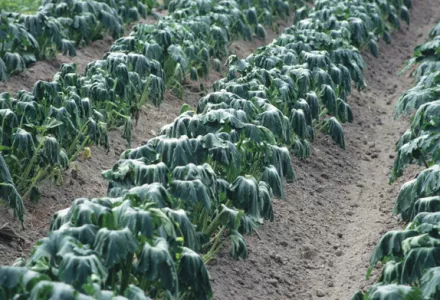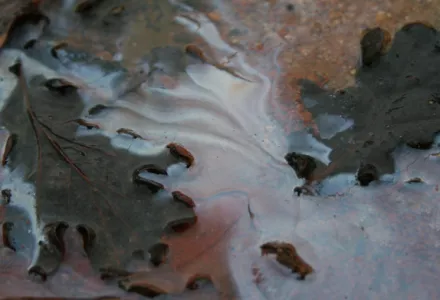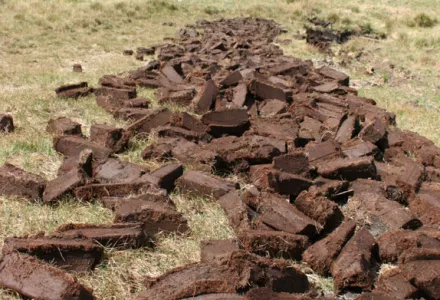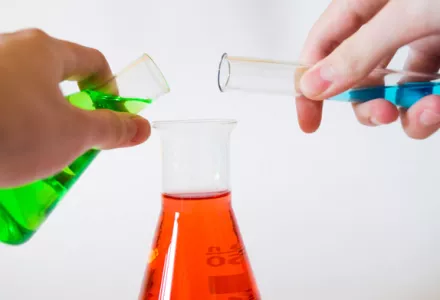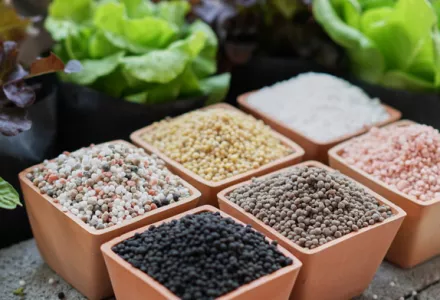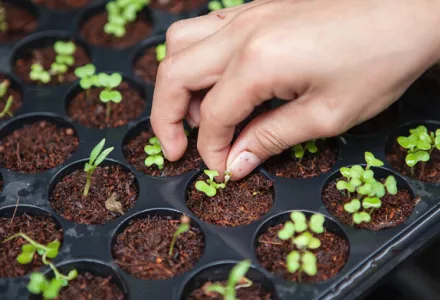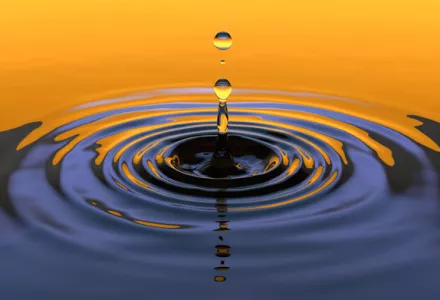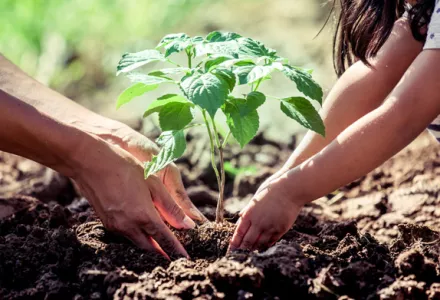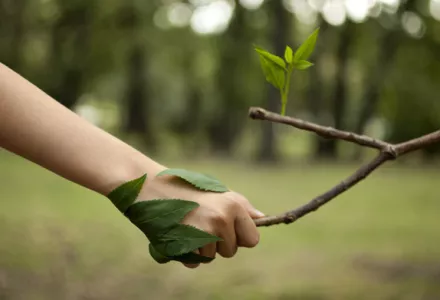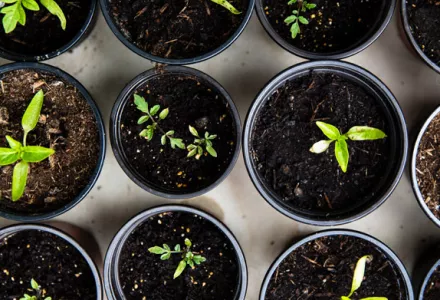If you ask the average person on the street how to grow a plant in a container, they will undoubtedly tell you to put some soil in a bucket or pot and then pop in the plant, water it regularly, throw in some fertiliser occasionally and Bob’s your uncle.
People who grow plants know it’s not really that simple – you need to be a little more precise. Once you decide to grow a plant or a crop and you choose what to grow, you’ll have to decide on many other factors too, such as where to grow the plants, how to grow them and, most importantly, what to grow them in. Remember, half of the plant will be in the container for its entire life and changing growing medium is seldom a recipe for success. So you have to choose the right growing medium from the start.
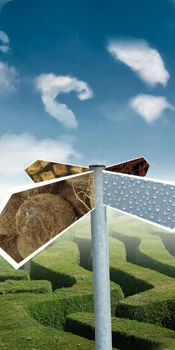
The first thing to decide is which plant to grow. This more or less determines everything else the grower will do. It will determine what the ideal conditions are for the roots for the root zone to function correctly. Plants have evolved root systems to work with the environments they evolved in. Plants from arid regions have roots that do not do well in water based systems such as clay pebbles or gravel, these plants do much better in an organic medium where the roots will have much less water as there will be longer intervals between watering.
In contrast, a plant from the tropics will thrive in shallow well-drained soil which is watered frequently. All this does not mean that plants will not grow, but the problems that can be associated with these growing systems are not worth the effort, compared to the results you can expect if you grow your plants under ideal the circumstances.
The KISS principle
There are a number of growing styles to choose from: field grown, hydroponic run-to-waste, hydroponic recirculation, or an organic based medium (for example: peat lite mixes, coco, mineral soil). You should choose a growing style according to the plant you want to grow and your own growing ability. These two factors will determine the best container to use as well as the appropriate medium to grow in.
Elaborate systems do not make better growers, they only make things difficult. Sometimes a grower has to use a complicated growing system to overcome specific obstacles, both physical and economic, but you should always design a plant growing system according to the KISS principle; Keep It Simple Stupid! A good grower will work with his or her attributes and limitations. If time is an issue, automate. If the grower is experienced and wants to ‘play’ then try advanced techniques. If the grower is new, stick to a forgiving medium. Use what works, but use it right.
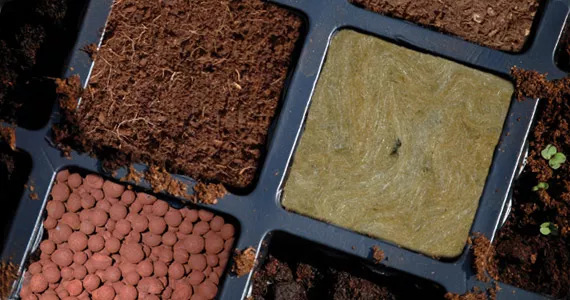
Choose your growing medium
Plant roots can adapt to a variety of conditions, ranging from low to high values for pH, fertility, moisture, and aeration. The plants will grow and generally look pretty healthy, but it will be the overall performance that is affected by these conditions. Plants have exactly one function in life – to reproduce. The wrong pH values will change the ratio of nutrients that become available to the plant, yet as long as they stay within reasonable limits, the plant will flower. Low fertility will affect the growth and vitality of a plant but it will flower. As long as the plant has some moisture it will flower. Air is critical to root systems surviving, not just working. Make sure the medium you choose fits the drainage and water retention characteristics your plant needs.
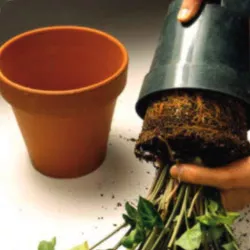
You really should take all these factors into account when you select the growing medium to use. Then select a container to use according to the size of your plant, the growing medium to use, and the growing environment. Remember that the mass of the root system should equal the mass of the plant above ground. A tree that will grow to 5 feet tall will have serious problems in anything smaller than a 5 gallon (20 litre) container.
If the plant will crop when grown in a smaller container then use a smaller container. It will flower sooner so consider increasing the overall number of containers.
Remember, sand will wash out of a container, a soil or soilless mix may be better. Sand will work well in a slab under NFT conditions where a soil or soilless mix would compact and result in a smaller crop. In other words, choose the size of your container based on the crop you want and the growing medium. All these factors will determine the best system to use.
Table 1 gives a very brief rundown of some of the types of medium currently available. There are many additional characteristics that can and should be taken into account when choosing. How labour-intensive is the medium is?
What will make the plant proliferous? How much time can be spent monitoring the crop? How will you dispose of it after use? These are but a few of the questions a grower must answer when deciding on the growing medium. How to crop and grow a plant are just some of the questions to address in addition to the ones just mentioned about picking a container to use.
Table 1
| Medium | Drainage | Support | Aeration | Suitable Systems | Notes |
|---|---|---|---|---|---|
| Mineral Soil | low to high | excellent | low to high | Container, bed, Run to Waste | Many types and compositions |
| Soilless Mix, Peat based | low to high | medium to excellent | low to high | Container, bed, Run to Waste | Composition of aggregates determine porosity, low pH |
| Soilless Mix, Coco | low to high | medium to excellent | low to high | Container, bed, Run to Waste | Age of Coco an issue, chemical composition issues, pH stable, aggregate and mulch size determine porosity |
| Inert Mediums, sand, perlite, vermiculite etc. | high | low to medium | medium to high | NFT, container, bed, Run to Waste | pH stable, highter the aeration less water buffer |
| Inert Mediums, rockwool | medium | medium (light and depends on size) | medium | Ebb and Flood, containers, Run to Waste | High initial pH, pH can rise again after buffering, solid blocks restrict additional aeration |
| Gravel, pebbles | high | little | high | Hydroponic recirculation in containers | Neutral pH, wash before use, reusable, requires constant monitoring, no nutrient or water buffer |
| Water | none | none | none | Hydroponic recirculation in a tank | pH varies widely, need aeration pumps, continuous nutrient monitoring, fast negative effects |
| Aeroponic | high | none | high | Hydroponic recirculation in special systems to confine water | pH varies widely, continuous nutrient and water monitoring, no buffers, chemical composition varies with air quality, no root temp buffering |
Table 1 also lists the possible growing mediums in order of ease-of-use. A clay/sand soil will have the greatest buffers for nutrients and water; aeroponic systems will have the least. Rock wool takes more time to prepare and will give you recurring problems with the pH. Inert mediums have good water retention with no nutrient buffering.
Organic materials leave traces in the drainage water and should not be recirculated. You will have to monitor inert mediums closely and measure the nutrients and pH precisely. This is not only expensive, in terms of the specialised equipment you will need to monitor these components. A novice grower is well advised to start with an organic medium which will provide the greatest margin for error and to only progress to the next type of growing medium once you have mastered all the elements of good growth such as light, watering intervals, temperature control and humidity levels.
Choices made by the grower
In short, keep the system simple, grow in an easy medium and in the right size container to enjoy the fruits of your labour and get the most out of your plants. Some growers think that the best system to use is the one they will try next. Keep it simple; make sure you achieve results before moving on. Remember that it is not the system that makes the plants, it is the grower and the choices made by the grower at the outset that determine success. The right set of nutrients, composed correctly with correct ratios of fertiliser will produce similar results in any medium as long as all the other variables are in line; it is the mistakes that limit production.

